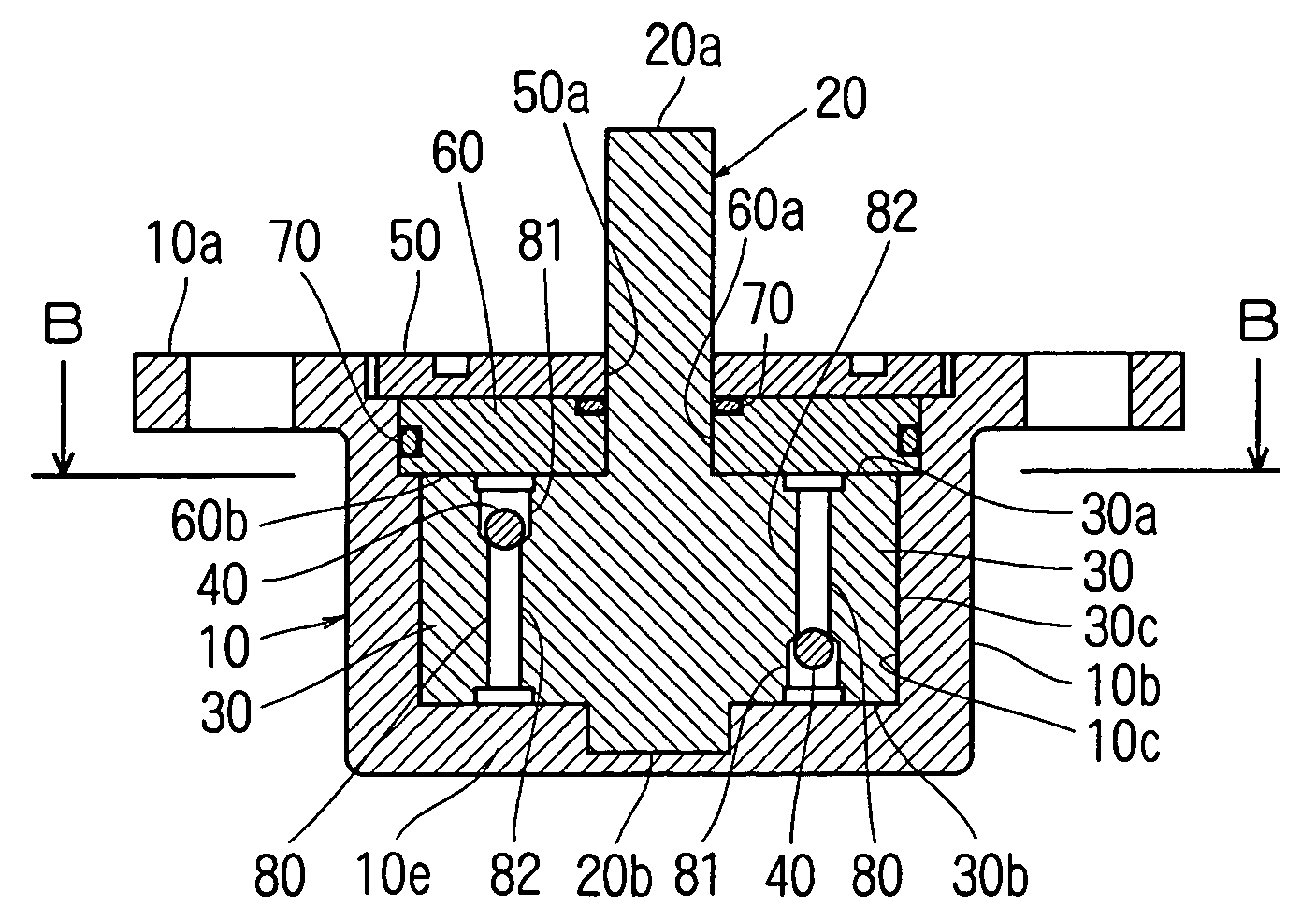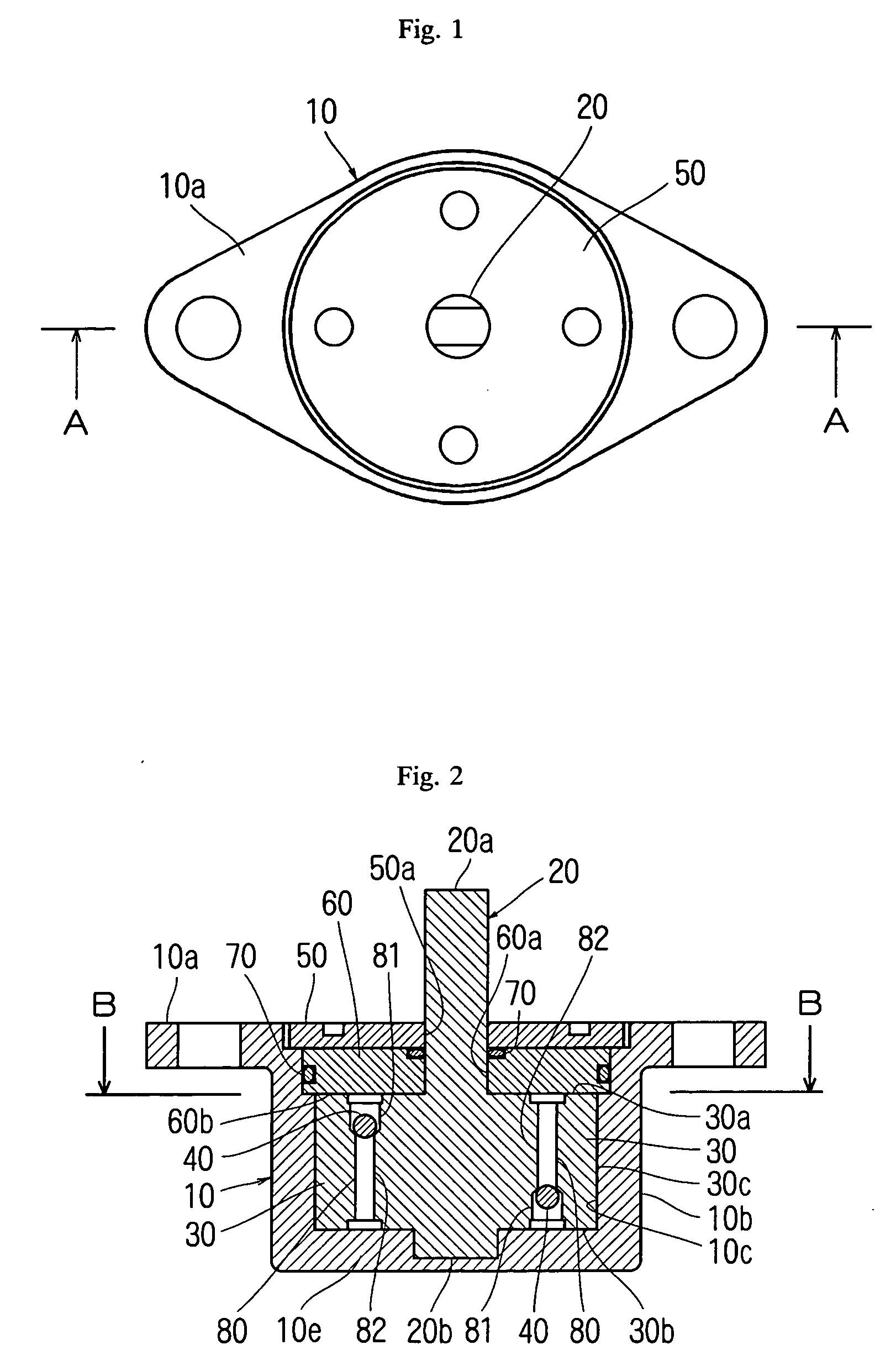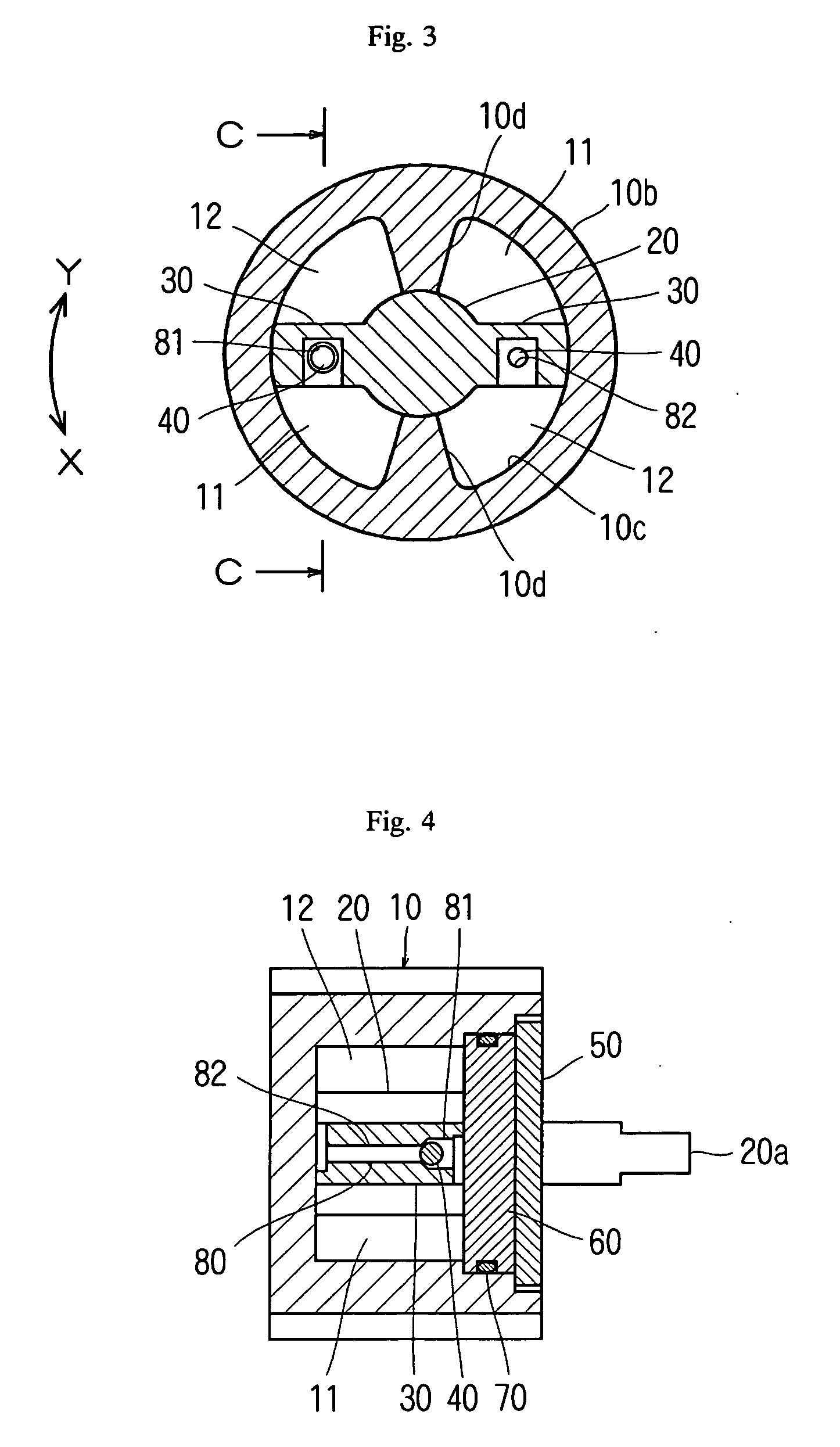Rotary damper
- Summary
- Abstract
- Description
- Claims
- Application Information
AI Technical Summary
Benefits of technology
Problems solved by technology
Method used
Image
Examples
Example
[0032] In the drawings, a reference number 10 represents a body case, a reference number 10d represents a partition wall, a reference number 11 represents a pressure chamber, a reference number 12 represents a non-pressure chamber, a reference number 20 represents a rotation shaft, a reference number 30 represents a vane member, a reference number 40 represents a valve body, a reference number 50 represents a lid member, a reference number 60 represents a guide member, a reference number 70 represents a seal member, a reference number 80 represents a liquid passage, a reference number 81 represents a large hole portion, a reference number 82 represents a small hole portion and a reference number 90 represents a spring.
BEST MODE FOR CARRYING OUT THE INVENTION
[0033] The present invention will be explained in more detail based on an embodiment shown in the drawings below.
[0034] As shown in FIGS. 1 to 4, the rotary damper according to the embodiment of the invention comprises a body ...
PUM
 Login to View More
Login to View More Abstract
Description
Claims
Application Information
 Login to View More
Login to View More - R&D
- Intellectual Property
- Life Sciences
- Materials
- Tech Scout
- Unparalleled Data Quality
- Higher Quality Content
- 60% Fewer Hallucinations
Browse by: Latest US Patents, China's latest patents, Technical Efficacy Thesaurus, Application Domain, Technology Topic, Popular Technical Reports.
© 2025 PatSnap. All rights reserved.Legal|Privacy policy|Modern Slavery Act Transparency Statement|Sitemap|About US| Contact US: help@patsnap.com



